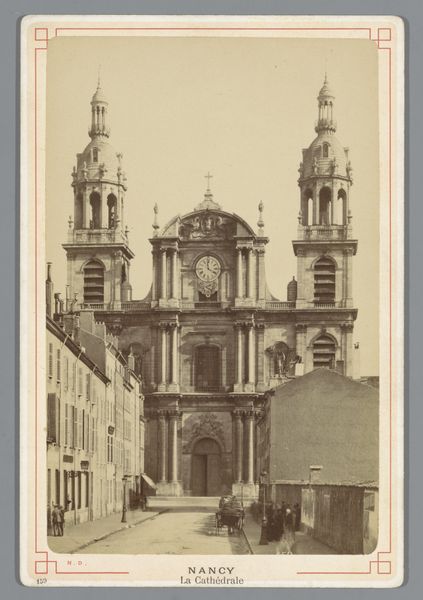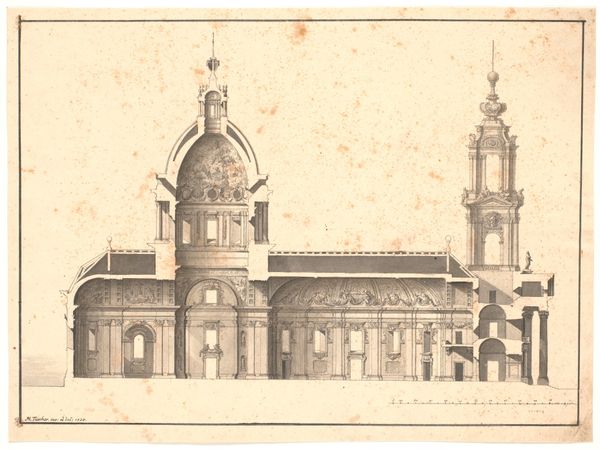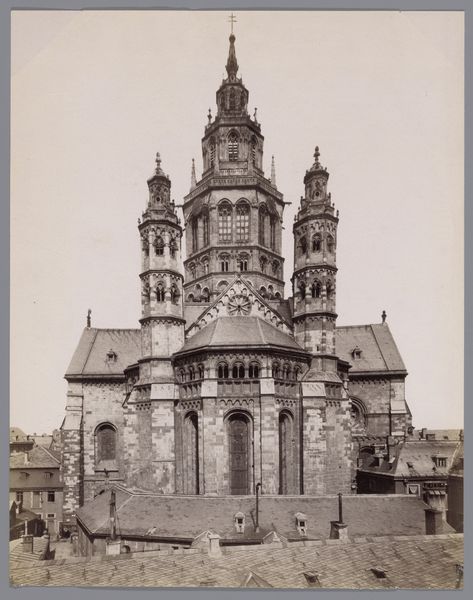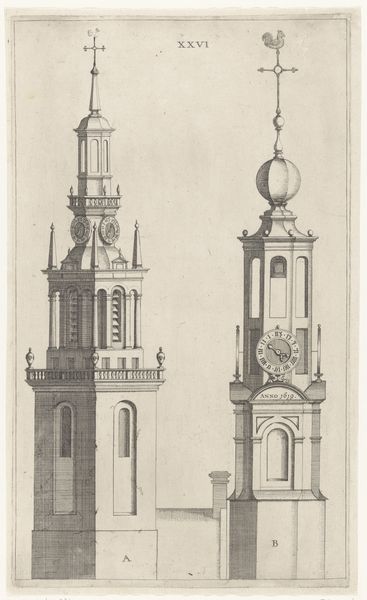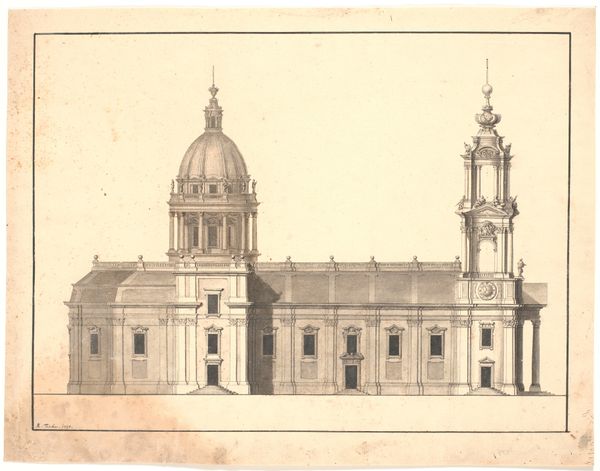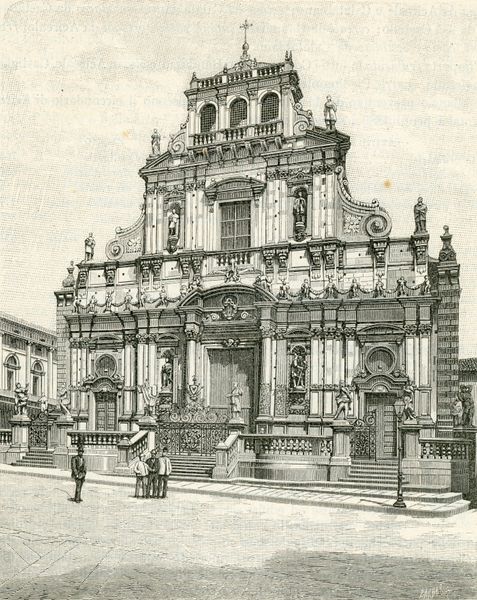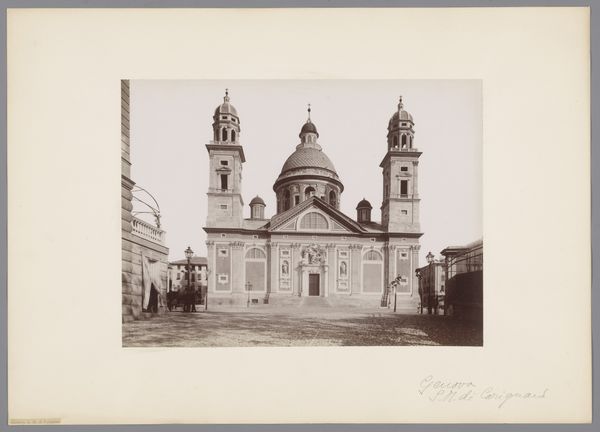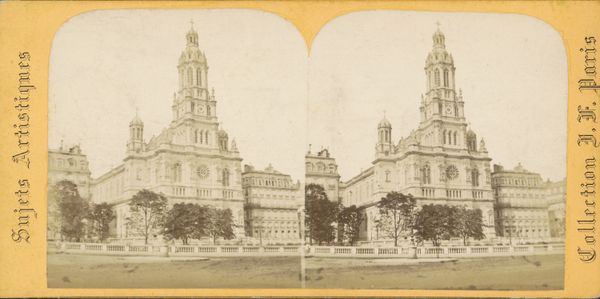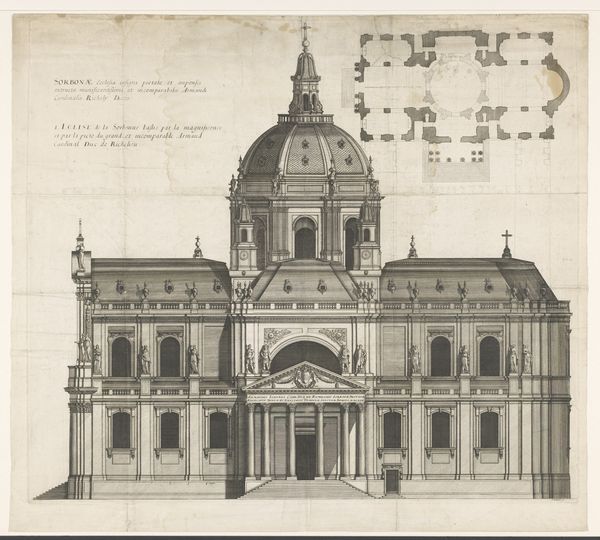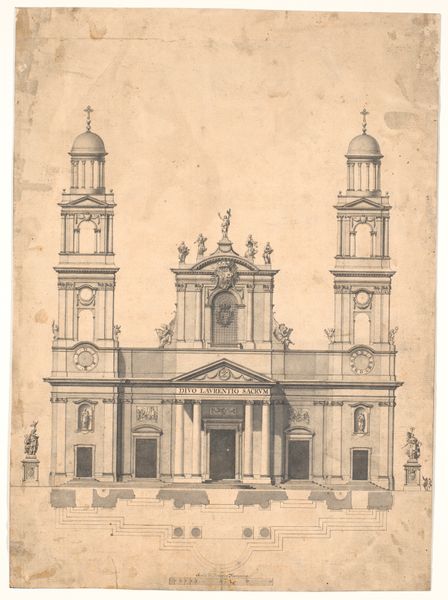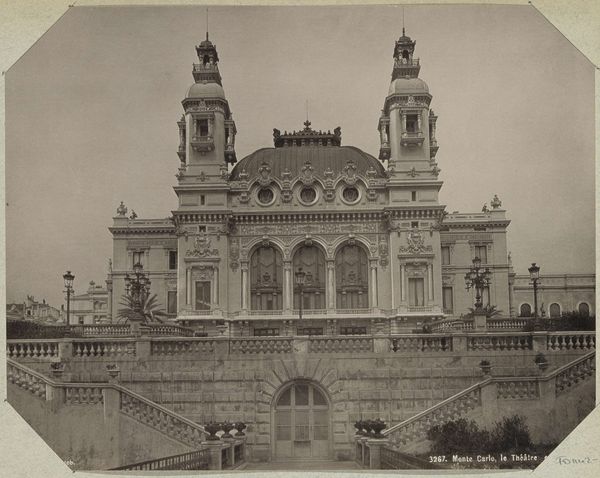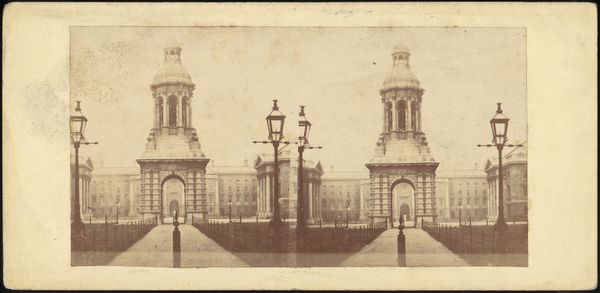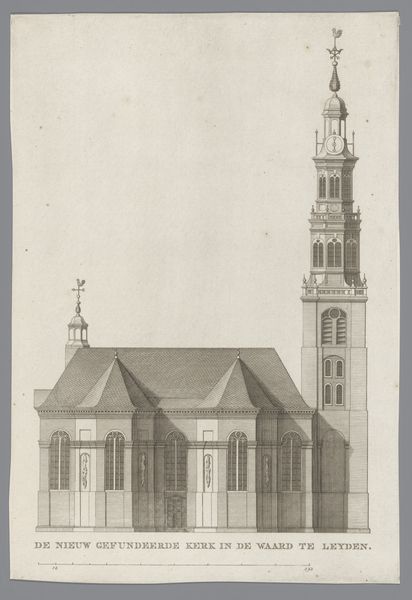
print, photography, architecture
# print
#
photography
#
19th century
#
cityscape
#
watercolour illustration
#
architecture
Dimensions: height 92 mm, width 150 mm
Copyright: Rijks Museum: Open Domain
Editor: Here we have "Gezicht op het Smolnaklooster in Sint-Petersburg" – that's "View of the Smolny Convent in Saint Petersburg" – an interesting print, possibly based on photography, created sometime between 1880 and 1900 by J. Daziaro. I'm struck by the monumentality, and the stark formality of the composition. What stands out to you, viewed through a historical lens? Curator: It's interesting you note the formality. Looking at this image through the lens of social history, I’m drawn to consider the function of such a photograph in its time. Images like these were often commissioned, reproduced and circulated as markers of imperial power and architectural achievement. How does this building communicate power to you? Editor: The sheer size and symmetry, the number of domes... It definitely communicates a sense of imposing authority, like many churches from the era. The perspective almost feels designed to emphasize the scale. Curator: Exactly! Think about who might have been consuming this image: wealthy tourists, government officials, or perhaps even the royal family. For each of these potential audiences, the photograph served a distinct purpose. For example, it helped to promote tourism by creating idealized version of cityscapes and architecture. How does its dissemination serve a purpose of image-building for Russia at this moment in history? Editor: So it’s less a neutral record and more an active participant in shaping perceptions, even propaganda in a way? That changes how I see it completely. I'm no longer looking at just a pretty building, but a constructed representation of power. Curator: Precisely. Photography in the 19th century wasn’t just about capturing reality; it was about curating it. Consider the social implications tied to photography's ability to define what was considered worthy of representation and how this intersects with notions of cultural superiority and national pride. Editor: I never thought about a simple image of architecture carrying so much weight. I now see it representing more than just a structure. Thank you! Curator: Absolutely! Seeing art as part of broader political and cultural conversations truly enriches our understanding.
Comments
No comments
Be the first to comment and join the conversation on the ultimate creative platform.
